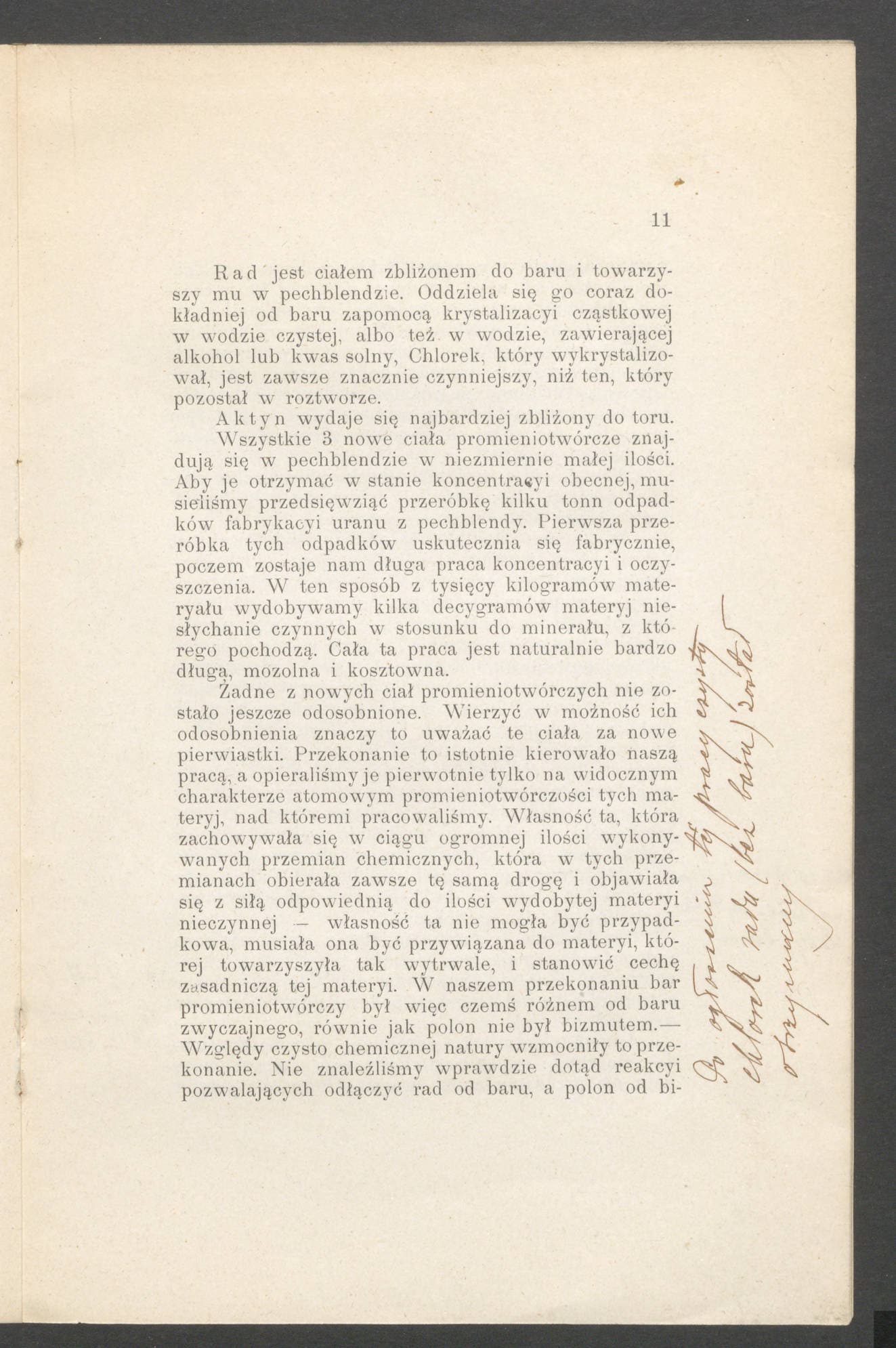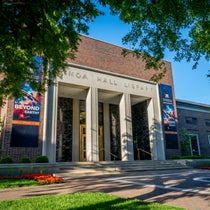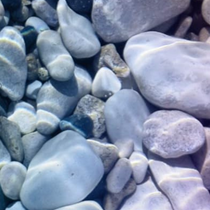Library Acquires Rare Paper by Marie Curie
We are thrilled to announce the Linda Hall Library’s acquisition of Marie Curie’s paper describing her work to isolate polonium and radium, and to determine radium’s atomic weight. This paper is of supreme importance as it includes Curie’s manuscript editorial corrections to the printed text on three pages that correct typographical errors, clarify meanings, and update the scientific understanding of her work through 1902.
Only three other copies of this separate publication exist: at a public library in Lublin, the National Library of Poland in Warsaw, and the Library of Congress in Washington, DC. None of the other copies have Dr. Curie’s corrections, making the Linda Hall copy unique in the world. The paper was acquired from The Second Shelf, a London bookstore focusing on “rare and antiquarian books, modern first editions, ephemera, manuscripts, and rediscovered works by women.” Second Shelf acquired the work from a private collector in Europe. This is the first time that this item has been available to the general public for research and use.
Dr. Curie was born in Poland, immigrated to France in 1891, and earned her Ph.D. from the University of Paris in 1903. Her work with her husband, Pierre, led to the discovery of polonium and radium, and eventually to her receiving Nobel Prizes in physics and chemistry in 1903 and 1911, respectively. She was the first woman to win a Nobel Prize, is the only woman to win the Nobel Prize twice, and is the only person to win the Nobel Prize in two different scientific fields.
The present paper was translated by Dr. Curie from French to her native Polish. The French language version of the work, Les Nouvelles Substances Radioactives, was published in several versions in the year 1900, providing the basis for this text. The Library holds a version of this French paper, published in the reports of the Congrès International de Physique in 1900.
Dr. Curie desired to share her work with her Polish colleagues, and translated this work from the French to her native Polish. In a letter to Tadeusz Estreicher, the Polish chemist, she complained that her difficulty with Polish scientific terms made the translation challenging.
Despite these challenges, the paper was presented to the chemical and physical section of the 9th Congress of Polish Physicians and Scientists held at Cracow on July 24, 1900. She could not afford to travel to Cracow herself, and instead sent three letters and samples of barium chloride which carried radium for the physics laboratory at Jagiellonian University with instructions as to how to perform experiments on the barium chloride. In her absence, a Professor Witkowski presented the paper, which was well received.
This Polish edition of the paper, published only months after the French, has a great deal of new information, and reflects how quickly she had to update her publications to reflect her rapidly growing understanding of her discoveries. For example, in the Polish text there is an additional heading and several names are mentioned that are not mentioned in the French version (Debraya, Owens, Rutherford). There are also diagrams in the Polish version not present in the French. On page six in the Polish edition she mentions piezoelectric quartz which is not mentioned in the French edition.
Beyond these changes and additions, this Polish publication by Dr. Curie includes additional manuscript corrections, which provide significant details missing from her publication record and history. Work with corrections in her hand is extraordinary, and further adds to the significance of this object. Her annotations appear on three pages in the item, and are described below:

On page 6, Curie has crossed out the word “stałe” (tr:constant) and replaced it with “słabe” (tr: weak), making the updated translated sentence read “These cartridges/charges are extremely constant [corrected to: weak] and can be levelled by using piezoelectric quartz Q, of which one cover is connected with the plate A and the other with the ground.

On page 11, Curie writes “Po ogłoszeniu tej pracy czysty chlorek radu (bez baru) został otrzymany” which translates to “After the publication of this work, pure radium chloride (without barium) was obtained.” This references the first sentence of the third paragraph on the page, starting with the word “Zadne.” The translated printed sentence reads “None of the new radioactive substances have yet been isolated.” It is this correction that allows us to date the comments after 1902, as Curie did not isolate radium chloride until that year.

On page 12, Curie adds three corrections. In the first, Curie has inserted “no” above “radosnego” so that the corrected word is: radonośnego (tr: carrying/containing radium, a word created by Marie Curie), different from cheerful or gay, which the printed “radosnego” meant.
In the second, after the printed sentence “W ostatnich próbkach widmo to występuje z równą siłą, jak widmo baru, tak, że rad i bar znajdują się zapewne w tych próbkach w ilościach podobnych,” she writes “(x) W późniejszem widmie są tylko ślady baru.” Translated, the printed sentence reads “In the most recent samples, the spectrum occurs with the same strength as the spectrum of barium, so radium and barium are most probably present in these samples in similar quantities.” Curie’s translated comment reads “In a later spectrum there are only traces of barium.”
In the third and final correction, after the printed sentence “Ostatnie oznaczenie dało 146 jako ciężar atomowy baru radonośnego, podczas gdy bar zwykły daje 138,” she writes “(xx) 174 i to nie czysty ale z barem.” Translated the printed sentence reads “The most recent marking gave 146 as atomic mass of barium that carried radium, while normal barium gives 138.” Her translated comment reads “174 and [even that/what’s more] not pure but with barium.”
This significant acquisition is one of the 19 acquisitions of rare books by or about women in science made in 2019. These acquisitions are evidence of the Library’s acquisitions priorities for its rare book collections:
- Material created by, and for, women
- Work created by people of color
- Items in non-Western languages
- American science
We are pleased to make this paper freely available to those with a research need to use it, as well as to make the item available in its entirety for free online through our digital collections.
Thank you to Maria Smulewska-Dziadosz for her work on the translation from Polish to English.






